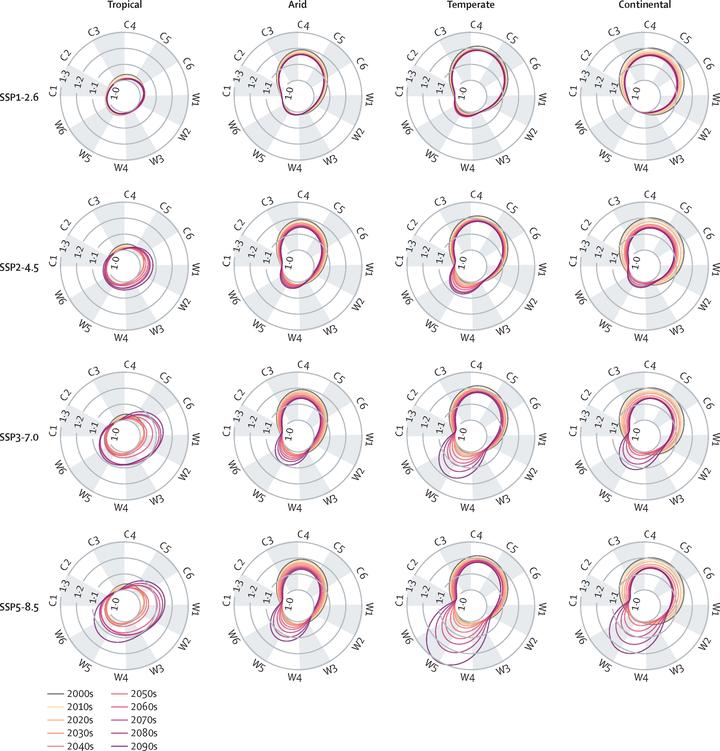
Abstract
Background. Climate change can directly impact temperature-related excess deaths and might subsequently change the seasonal variation in mortality. In this study, we aimed to provide a systematic and comprehensive assessment of potential future changes in the seasonal variation, or seasonality, of mortality across different climate zones. Methods. In this modelling study, we collected daily time series of mean temperature and mortality (all causes or non-external causes only) via the Multi-Country Multi-City Collaborative (MCC) Research Network. These data were collected during overlapping periods, spanning from Jan 1, 1969 to Dec 31, 2020. We projected daily mortality from Jan 1, 2000 to Dec 31, 2099, under four climate change scenarios corresponding to increasing emissions (Shared Socioeconomic Pathways [SSP] scenarios SSP1-2.6, SSP2-4.5, SSP3-7.0, and SSP5-8.5). We compared the seasonality in projected mortality between decades by its shape, timings (the day-of-year) of minimum (trough) and maximum (peak) mortality, and sizes (peak-to-trough ratio and attributable fraction). Attributable fraction was used to measure the burden of seasonality of mortality. The results were summarised by climate zones. Findings. The MCC dataset included 126 809 537 deaths from 707 locations within 43 countries or areas. After excluding the only two polar locations (both high-altitude locations in Peru) from climatic zone assessments, we analysed 126 766 164 deaths in 705 locations aggregated in four climate zones (tropical, arid, temperate, and continental). From the 2000s to the 2090s, our projections showed an increase in mortality during the warm seasons and a decrease in mortality during the cold seasons, albeit with mortality remaining high during the cold seasons, under all four SSP scenarios in the arid, temperate, and continental zones. The magnitude of this changing pattern was more pronounced under the high-emission scenarios (SSP3-7.0 and SSP5-8.5), substantially altering the shape of seasonality of mortality and, under the highest emission scenario (SSP5-8.5), shifting the mortality peak from cold seasons to warm seasons in arid, temperate, and continental zones, and increasing the size of seasonality in all zones except the arid zone by the end of the century. In the 2090s compared with the 2000s, the change in peak-to-trough ratio (relative scale) ranged from 0·96 to 1·11, and the change in attributable fraction ranged from 0·002% to 0·06% under the SSP5-8.5 (highest emission) scenario. Interpretation. A warming climate can substantially change the seasonality of mortality in the future. Our projections suggest that health-care systems should consider preparing for a potentially increased demand during warm seasons and sustained high demand during cold seasons, particularly in regions characterised by arid, temperate, and continental climates.